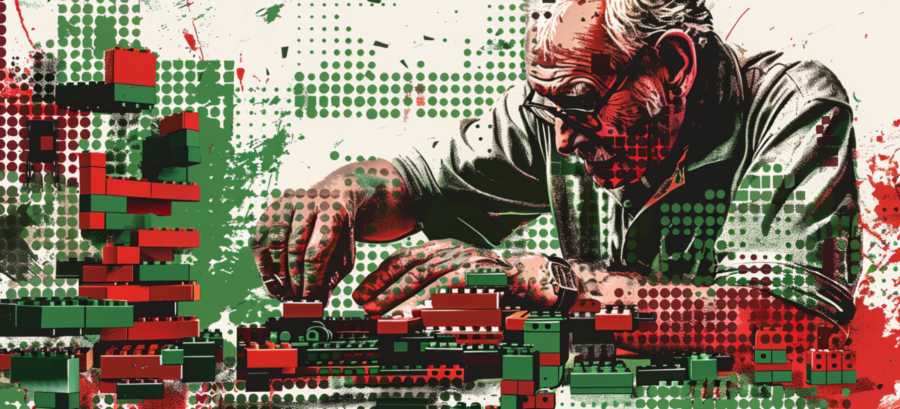From Playrooms to Studios: LEGO’s Leap into Professional Design
Architects are finding that these colorful interlocking blocks aren’t just for kids. In fact, using LEGO can be an enlightening experience for professionals who are accustomed to rigid lines and conventional forms. By engaging with LEGO, architects reconnect with a primal form of creativity that many first encountered in their childhood. It’s a return to basics, to a time when constraints were less about physics and more about the number of bricks left in your box.Thinking Outside the Blocks: Innovation through Play
When faced with a complex architectural challenge, turning to LEGO might seem counterintuitive. However, these small bricks serve as a powerful tool for ideation. As architects snap the pieces together, the tactile experience can unlock new ways of thinking about space, structure, and aesthetics. The modularity of LEGO allows for rapid prototyping of architectural concepts, making it easier to visualize and modify designs in real-time, without the formalities of CAD software or the mess of traditional modeling materials.LEGO and Team Building: Collaborative Structures
In the architectural world, teamwork is crucial, and LEGO bricks offer a unique way to foster team collaboration. During team meetings, instead of flipping through PowerPoint slides, imagine groups of architects building models together. This hands-on approach not only enlivens the meeting but also enhances understanding and communication among team members. By constructing LEGO models, teams can physically explore ideas, leading to a more dynamic and interactive design process.Sustainable and Scalable: A Lesson from Bricks
LEGO teaches architects a lesson in sustainability. The durability and reusability of LEGO bricks remind professionals of the importance of designing buildings that can adapt, change, and possibly even be deconstructed and reused. Just as a LEGO structure can be dismantled and reassembled into something entirely new, so can modular components of actual buildings in theory. This approach to design is increasingly relevant in a world that demands sustainable and flexible building strategies.The Visual and the Visceral: Rendering Ideas Tangible
One of LEGO’s greatest contributions to architectural design is its ability to make abstract concepts tangible. Instead of relying solely on digital renderings, architects can use LEGO to build physical models that clients can see and touch. This not only bridges the gap between architect and client but also allows non-professionals to understand spatial relationships and design intentions more intuitively. It’s one thing to see a 3D model on a screen; it’s another to watch a project come to life one brick at a time on the conference table.Architectural Storytelling: LEGO as a Narrative Tool
Every building tells a story, and LEGO helps architects narrate that story from the ground up. By constructing preliminary models with LEGO, architects can experiment with narrative elements of design, exploring how a space can evoke feelings or convey messages. It’s like setting the stage for a play where every brick adds a line to the script. Whether it’s a dramatic skyscraper or a serene residential area, LEGO helps lay the foundation of this story in a uniquely engaging way.Educational and Inspirational: LEGO in Architecture Schools
Recognizing the value of this playful medium, some architecture schools have incorporated LEGO into their curricula. It’s used as a tool to teach design principles and construction methods in a way that is accessible and engaging. For students, these exercises demystify complex architectural concepts and encourage a hands-on approach to learning. Plus, it’s always a refreshing change for students to be graded on their LEGO projects rather than traditional exams!Expanding Horizons: The Future of LEGO in Architecture
As we look to the future, the role of LEGO in professional architecture seems poised to expand. With advancements in technology, such as augmented reality, architects could soon overlay digital information onto physical LEGO models, combining the best of both worlds. This could revolutionize client presentations and design modifications, offering a hybrid model where physical and digital design processes enhance each other.Wrapping Up the Bricks
In conclusion, LEGO bricks offer more than just an amusing diversion; they are a serious tool for architectural innovation and collaboration. These small plastic blocks encourage professionals to think in new dimensions, promote sustainability, facilitate client communication, and inspire the next generation of architects. So, perhaps it’s time for more architects to stop sidelining play and start embracing the boundless possibilities that come with thinking outside the blocks—and building with them.Article kindly provided by bricksetpricetracker.com

